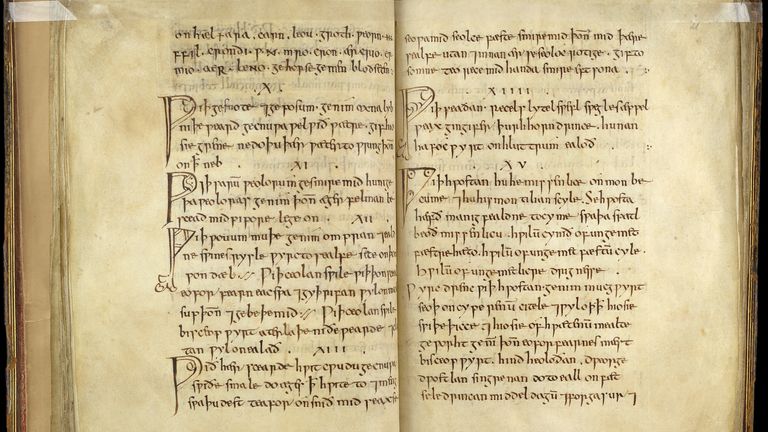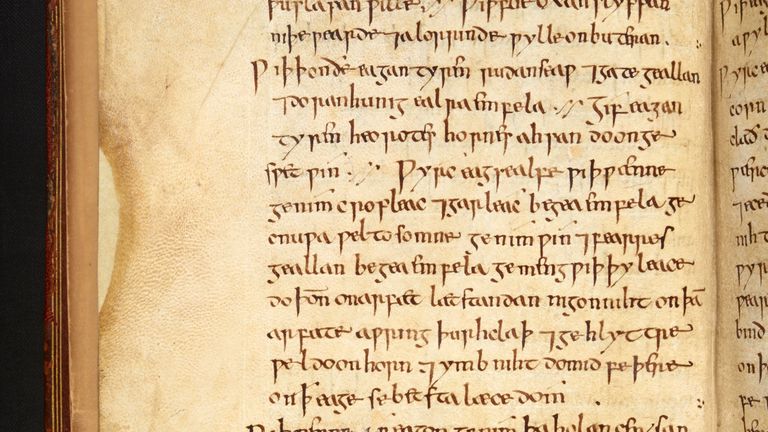A 1,000-year-old treatment for eye infections can be used to tackle antibiotic-resistant infections, scientists say.
Antibiotic resistance is an increasing challenge for modern medicine as more naturally occurring antimicrobials are needed to tackle infections capable of resisting treatments currently in use.
New research from the University of Warwick has investigated natural remedies to fill the gap in the antibiotic market, taking their cue from a 1,000-year-old text known as Bald’s Leechbook.
Building on previous research from the University of Nottingham on using medieval remedies to treat MRSA, the scientists reconstructed a potion known as “Bald’s Eyesalve”.
The ingredients for the eyesalve – which was used to treat eye sty infections – include onion, garlic, wine, and bile salts.
When the team experimented with it they found it showed promising antibacterial activity.
Bacteria can survive in two ways – either as an individual cell or as part of a multicellular biofilm. Biofilm-associated infections are much harder to treat.
The eyesalve the researchers tested appeared to cause only low levels of damage to human cells, while also being effective against a range of pathogens both by themselves (planktonically) and as part of a biofilm.
In particular they found it tackled five bacteria particularly well when they were in their multicellular and hard-to-treat form.
The researchers explained that those bacteria were commonly found in the biofilms that infect diabetic foot ulcer patients.
Diabetic foot ulcers are very difficult to treat, and sometimes lead to amputations as doctors seek to avoid the risk of the bacteria fatally spreading into the patient’s blood system.
According to the researchers, the Bald’s eyesalve mixture’s use of garlic, which contains allicin, could explain how it is able to tackle single bacteria – however garlic alone isn’t able to treat biofilm infections.
They suggest that therefore the anti-biofilm activity of Bald’s eyesalve cannot be attributed to a single active ingredient and actually requires the combination of all the listed ingredients to achieve full activity.
Dr Freya Harrison, from the University of Warwick, said: “We have shown that a medieval remedy made from onion, garlic, wine, and bile can kill a range of problematic bacteria grown both planktonically and as biofilms.
“Because the mixture did not cause much damage to human cells in the lab, or to mice, we could potentially develop a safe and effective antibacterial treatment from the remedy.
“Most antibiotics that we use today are derived from natural compounds, but our work highlights the need to explore not only single compounds but mixtures of natural products for treating biofilm infections.
“We think that future discovery of antibiotics from natural products could be enhanced by studying combinations of ingredients, rather than single plants or compounds,” Dr Harrison added.
“In this first instance, we think this combination could suggest new treatments for infected wounds, such as diabetic foot and leg ulcers.”
Her colleague and co-author, Dr Jessica Furner-Pardoe, said: “Our work demonstrates just how important it is to use realistic models in the lab when looking for new antibiotics from plants.
“Although a single component is enough to kill planktonic cultures, it fails against more realistic infection models, where the full remedy succeeds,” Dr Furner-Purdoe added.
They were assisted in their work not by additional research performed by a medical scientists, but by Dr Christina Lee, an associate professor in Viking Studies from the University of Nottingham’s school of English.
Dr Lee had examined the Bald’s Leechbook, an Old English leather-bound text, the only manuscript of which is kept in the British Library, to see if it really worked as an antibacterial remedy.
The Leechbook is one of the earliest known medical textbooks, written in Old English – spoken in England before the Norman invasion of 1066. It contains Anglo-Saxon medical advice and recipes for medicines, salves and treatments.
Dr Christina added: “Bald’s eyesalve underlines the significance of medical treatment throughout the ages. It shows that people in Early Medieval England had at least some effective remedies.
“The collaboration which has informed this project shows the importance of the arts in interdisciplinary research,” Dr Lee added.



